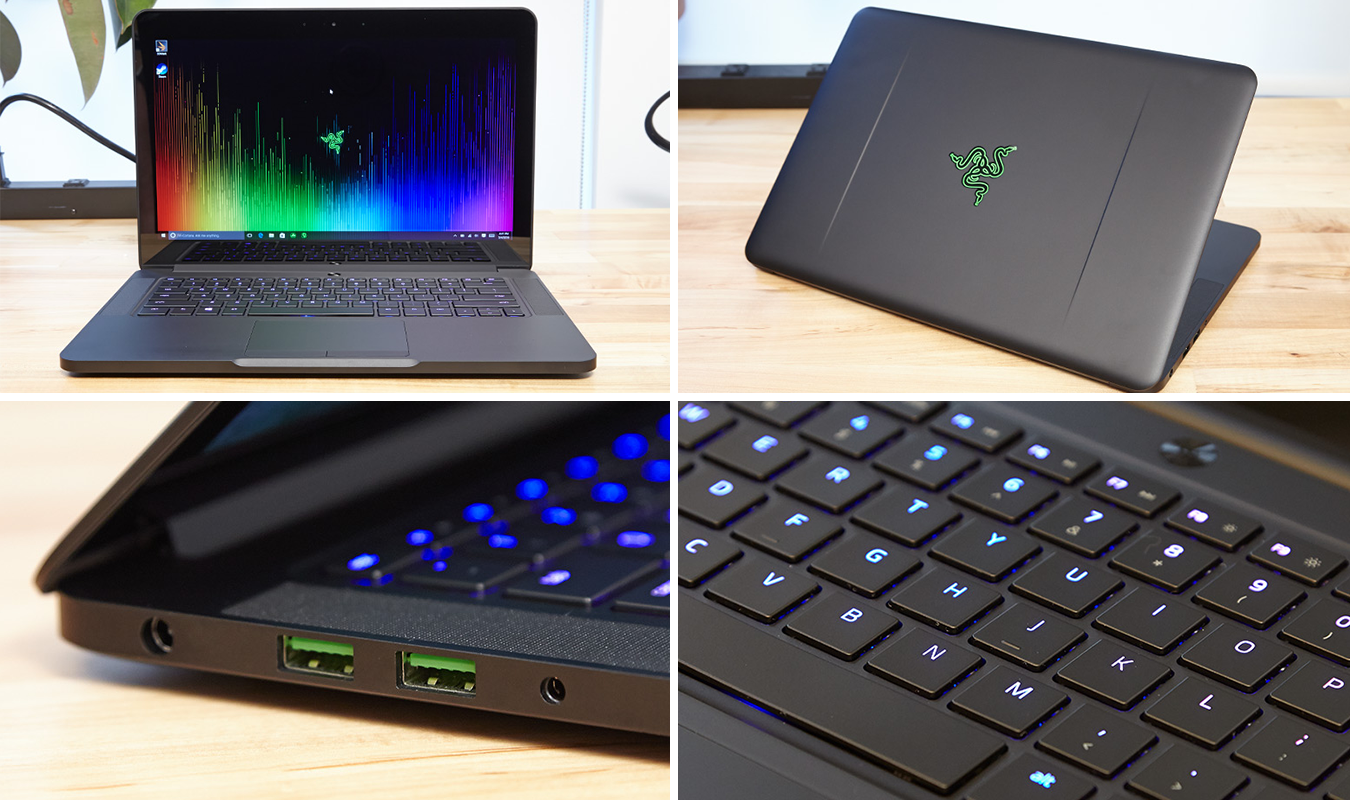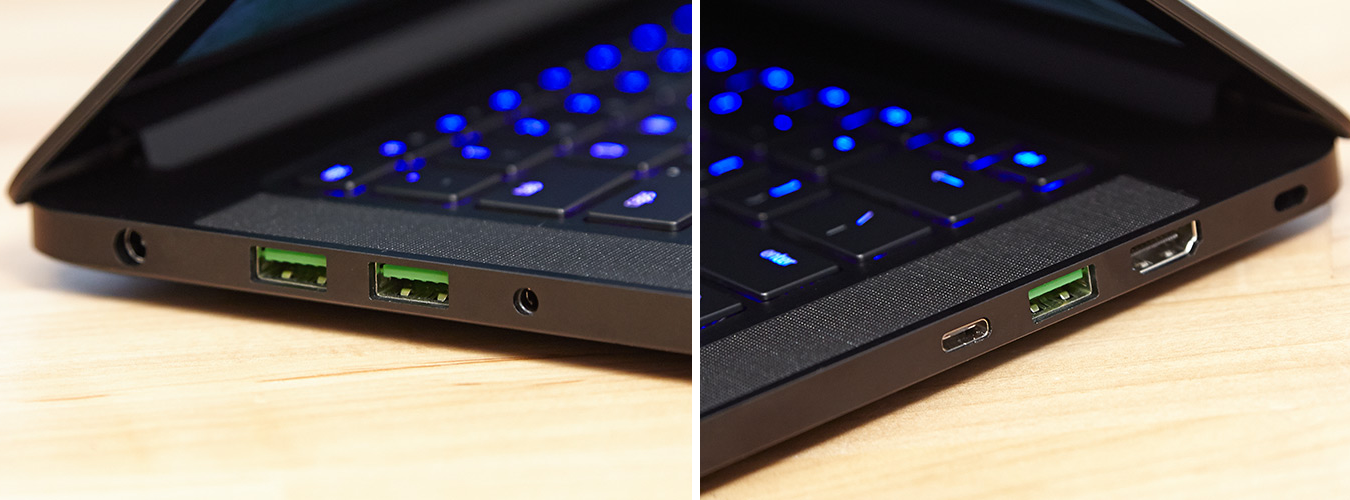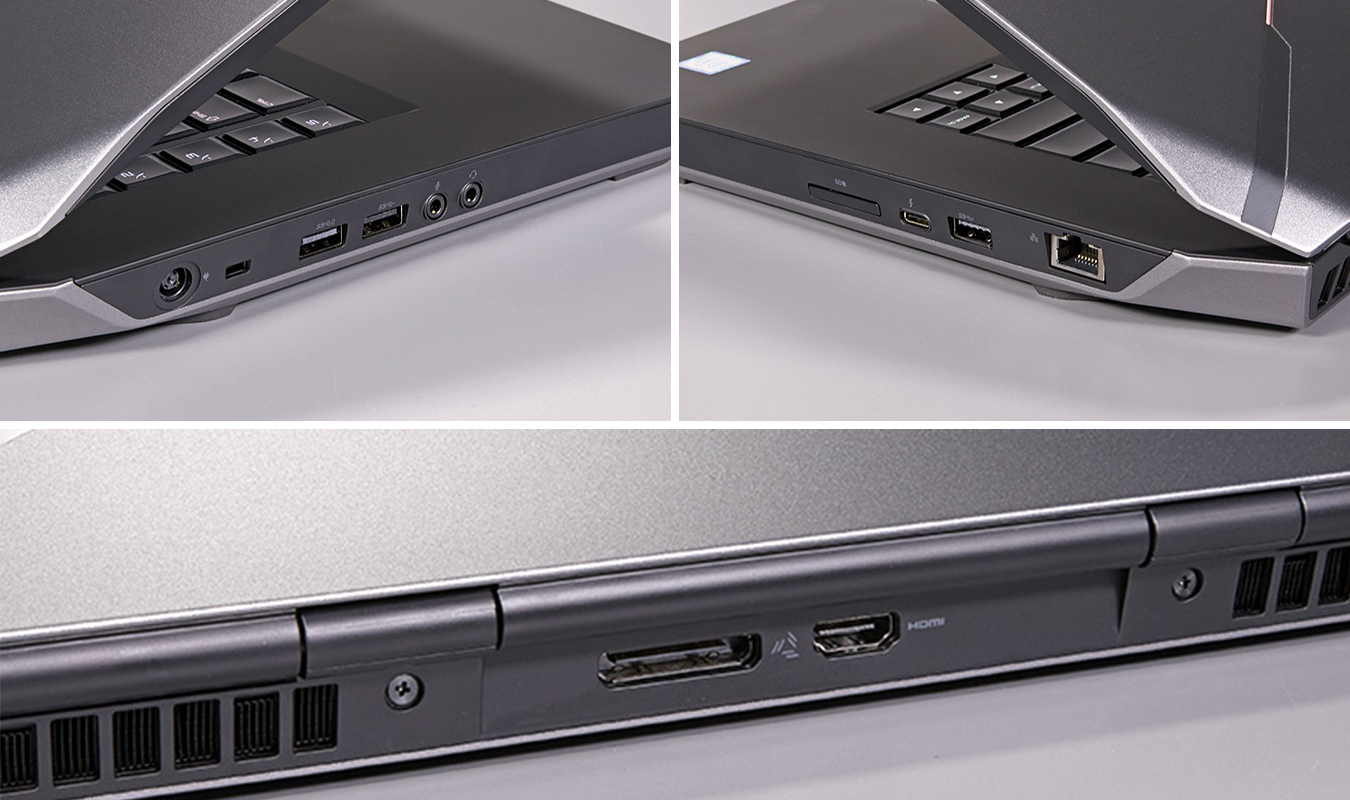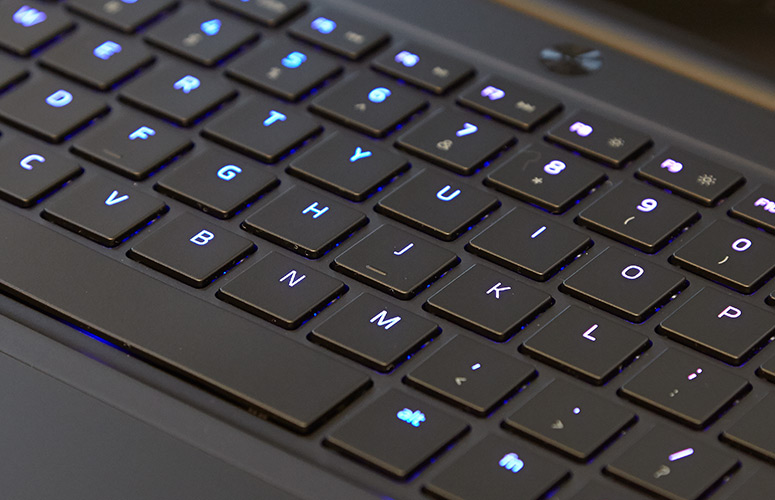Alienware 15 vs. Razer Blade: Clash of the Gaming Laptops
If you're looking for a gaming rig that's powerful enough to play demanding titles and portable enough to take with you, Dell's Alienware 15 and the Razer Blade should both be near the top of your list.
To help you decide which one is right for you, we've pitted the 14-inch Razer Blade against the 15-inch Alienware 15 in an eight-round face-off based on important criteria such as design, battery life, performance and display quality. So which one is it, the sleek, ebony powerhouse or the intergalactic gaming rig?
Design
Both the Alienware 15 and the Razer have distinctive design profiles. Clad in Space Gray anodized aluminum with backlit customizable accents strategically placed on its chassis, the Alienware 15 is a spaceship among notebooks.
MORE: Alienware 15 (2016): Full Review
However, the Alienware isn't the lightest or slimmest, weighing a whopping 7.1 pounds while measuring a chunky 15.2 x 10.6 x 0.9~1.3 inches. You can fit this extraterrestrial rig in a backpack for some on-the-go gaming, but like a Xenomorph fetus in your belly, it will make its presence felt.
MORE: Razer Blade (2016): Full Review
Sign up to receive The Snapshot, a free special dispatch from Laptop Mag, in your inbox.
The Razer Blade has a svelte and stylish design that puts even MacBooks to shame. Made from ebony CNC aluminum with a glowing tri-snake insignia, the laptop exudes an undeniable sexiness. The Blade is one of the lightest in its class, weighing a feather-light 4.25 pounds, with a seriously slim profile at 13.6 x 9.3 x 0.7 inches. After walking around for hours with the Blade stowed in a backpack, my back was no worse for wear.
Winner: Razer Blade. We love the Alienware 15's intergalactic looks, but carrying it is a different story. The Razer Blade's slick aesthetic is both pleasing to the eye and easy on your back.
Ports
Despite its slim chassis, the Razer Blade offers plenty of ports, to help you pair with a monitor, keyboard and other peripherals.
You get three USB 3.0 ports, HDMI and a Thunderbolt 3 port, which could support a monitor or the Razer Core, the company's soon-to-debut graphics amplifier. With the amp connected, the Blade can harness the power of a desktop-grade graphics card, making it powerful enough to run demanding VR titles.
The Alienware 15 has an assortment of ports and slots, including a trio of USB 3.0 ports, a USB Type-C port, HDMI and a Noble Lock, so you can keep your system safe and secure. The notebook also features Alienware's proprietary slot, which supports the company's own graphics amp.
Winner: Draw. Offering the same configuration of ports, both systems are pretty evenly matched. However, it is annoying that neither offers a microSD slot. How's anyone supposed to upload photos and videos from their cameras?
Display
(Editor's Note: The Alienware 15 can be configured with two varieties of a 4K panel. We will update this result upon reviewing one of those models.)
Alienware is typically known for its bright, vivid displays, but the 15-inch notebook was the anomaly — especially when compared to the Razer Blade. When we tested the Alienware 15's 1920 x 1080 matte display, we found that its average 222 nits was well below the 248-nit category average. The Blade's QHD+ (3200 x 1400) panel measured a sparkling 338 nits.
MORE: The Best Gaming Laptops
According to our colorimeter, the Alienware 15's 1080p display can only reproduce 60 percent of the sRGB color gamut. That's half of the Blade's (120 percent) output and well below the 100 percent you need to get truly vibrant output.
Winner: Razer Blade. Razer really outdid itself with the Blade's QHD+ display. Delivering vivid, accurate images, the panel is pretty as a picture, whether you're looking at photos, watching a movie or blasting enemies to smithereens in your favorite title.
Keyboard
In a side-by-side test, the Alienware 15's keyboard is the king of comfort, but the Blade's keys are brighter and more customizable.
Razer (above) has stepped up its game on the keyboard front, replacing its old green-glowing keyboard with a multicolored Chroma keyboard. In a side-by-side viewing, we learned that the Blade's keyboard was brighter than the Alienware 15's, beating it at its own backlit game.
However, with 1.3 millimeters of key travel, the Blade isn't the most comfortable thing I've ever typed on. By contrast, the Alienware 15 is a study in comfort, with plenty of bouncy feedback, a deep 2.2 millimeters of key travel and a springy 65 grams of required actuation force.
Winner: Alienware 15. Barring a mechanical keyboard, the Alienware 15 offers one of the most comfortable keyboard experiences you can get on a gaming laptop.
Software
Alienware's Command Center suite of software can transform your laptop into a glowing beast that is optimized for your gaming pleasure. Spread out over AlienFX, TactX, AlienAdrenaline and AlienFusion, gamers can configure the laptop's lighting, create macros over several profiles, monitor gaming performance and create custom power-usage plans.
MORE: The Best Laptops for Every Need
Razer's Synapse software, which allows you to change the keys' colors and map every single one with its own macro, is an improvement over Alienware's 5-macro limit. You can even get keystroke statistics to help you improve your PC gaming technique. Best of all, the software is cloud-based and works with other Razer products like the ManO'War and the Naga Hex V2, allowing you to access your settings on any Razer device.
Winner: Razer Blade. Razer Synapse allows gamers to program and track their keystrokes as well as configure their keyboard's color pattern.
Performance
The Blade is the fastest gaming laptop in the land, but the Alienware isn't too far behind.
Both systems we tested were outfitted with a 2.6-GHz Intel Core i7-6700HQ processor, 16GB of RAM and 256GB PCIe SSDs. But when push came to shove, the Alienware 15 edged out the Blade on our synthetic Geekbench 3 test, 13,494 to 13,268. The Blade struck back during the File Transfer benchmark, delivering a rate of 359.2 megabytes per second compared to the Alienware 15's 201.1 MBps. However, the Alienware 15 eked out a win on the OpenOffice Spreadsheet Macro Test, finishing with a time of 3 minutes and 50 seconds, while the Blade hit 3:55.
Winner: Alienware 15. Even though both laptops have the same specs, the Alienware 15 won two out of three tests.
Graphics
Both the Alienware 15 and the Blade are equipped with Nvidia GeForce GTX 970M GPUs. However, the Alienware 15 has 3GB of VRAM compared to the Blade's 6GB. Despite the additional video memory, the battle was closer than expected. On the Rainbow Six: Siege benchmark, the Blade hit 72 frames per second at 1080p on high, while the Alienware 15 obtained 71 fps. During the graphics-taxing Metro: Last Light test, the Alienware 15 hit 112 fps on low, beating the Blade's 103 fps.
Winner: Draw. Despite having more video memory, the Blade couldn't land a decisive win against the Alienware 15.
Battery Life
The Alienware 15 lasted a strong 7 hours and 13 minutes on our battery test (continuous web surfing over Wi-Fi), which is unheard of when it comes to gaming notebooks.
MORE: Laptops with the Longest Battery Life
The Blade died after 5 hours and 42 minutes, which isn't bad, but is nowhere near the Alienware 15.
Winner: Alienware 15. Where other gaming systems are tapping out after 5 to 6 hours, the Alienware lasted over 7 hours.
Value
Razer and value have never been synonymous — until now. Instead of charging a typical arm, leg and newborn babe for the Blade, the starting configuration is now priced at $1,999. The company's not being stingy with the specs, either, loading it up with a 2.6-GHz Intel Core i7-6700HQ processor, 16GB of RAM, 256GB PCIe SSD, an Intel HD Graphics 530 GPU, an Nvidia GeForce GTX 970M GPU with 6GB of VRAM and a QHD+ display. However, our configuration of the Alienware 15 costs $1,849 and offers near-identical specs, save for the 1080p display and lower video memory.
But Razer has a long way to go before it can compete with Alienware in the budget-conscious Olympics. The Alienware 15 starts at $1,199 and features a 3.2-GHz Intel Core i5-6300HQ CPU with 8GB of RAM, a 1TB, 7,200-rpm hard drive, an Intel HD Graphics 530 GPU and an Nvidia GeForce GTX 965M GPU with 2GB of RAM. Alienware also owns the configuration arena, as the Alienware 15 can also be upgraded with up to 32GB of RAM, a 512GB PCIe SSD, an Nvidia GTX 980M GPU with 8GB of VRAM and a 4K IPS panel.
Winner: Alienware 15. Alienware maintains its title as one of the most cost-effective and configurable gaming laptops on the market.
Overall Winner
The Alienware 15 and Razer Blade are two sides of the same coin. On one side, you've got the $1,999 Razer Blade with its slim, svelte chassis. The stealth assassin of the gaming world, Razer's 14-inch laptop is outfitted with a QHD display, a customizable backlit keyboard, blistering-fast transfer speeds and great performance.
On the other side, there's the $1,849 Alienware 15 — a chunky beast of a system that looks more like a spaceship than a gaming computer, but offers out-of-this world battery life and performance.
If portability and style are most important to you, the Razer Blade is your best choice. However, the Alienware 15 is our overall winner, thanks to its superior typing experience and long battery life.
$1199
$1399
Razer

Sherri L. Smith has been cranking out product reviews for Laptopmag.com since 2011. In that time, she's reviewed more than her share of laptops, tablets, smartphones and everything in between. The resident gamer and audio junkie, Sherri was previously a managing editor for Black Web 2.0 and contributed to BET.Com and Popgadget.










